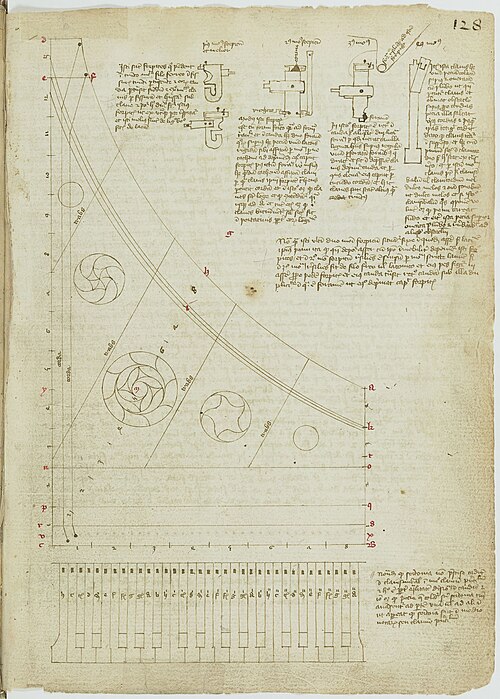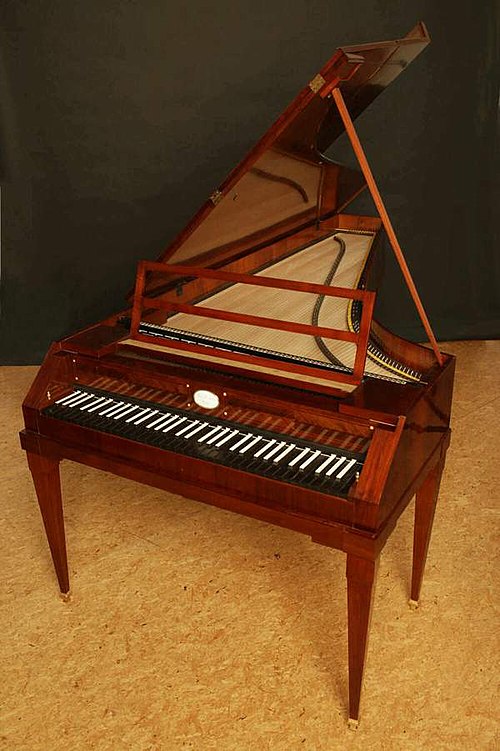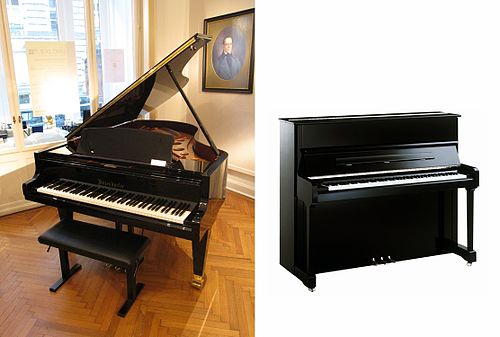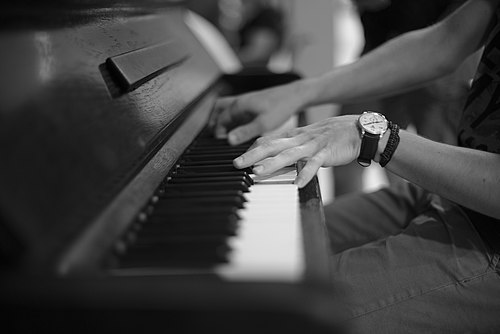Harpsichordnoun
(musical instruments) A musical instrument with a keyboard that produces sound through a mechanical process. When the performer presses a key, a corresponding plectrum plucks a tuned string. The harpsichord originated in late medieval Europe and is one of the most important instruments used to perform Baroque music.
Harpsichordnoun
A harp-shaped instrument of music set horizontally on legs, like the grand piano, with strings of wire, played by the fingers, by means of keys provided with quills, instead of hammers, for striking the strings. It is now superseded by the piano.
Harpsichordnoun
a clavier with strings that are plucked by plectra mounted on pivots
Harpsichordnoun
a keyboard instrument with horizontal strings which run perpendicular to the keyboard in a long tapering case, and are plucked by points of quill, leather, or plastic operated by depressing the keys. It is used chiefly in European classical music of the 16th to 18th centuries.
Harpsichord
A harpsichord (Italian: clavicembalo, French: clavecin, German: Cembalo, Spanish: clavecín, Portuguese: cravo, Dutch: klavecimbel) is a musical instrument played by means of a keyboard. This activates a row of levers that turn a trigger mechanism that plucks one or more strings with a small plectrum made from quill or plastic.
Pianonoun
(musical instruments) A keyboard musical instrument, usually ranging over seven octaves, with white and black colored keys, played by pressing these keys, causing hammers to strike strings.
Pianoadjective
(music) Soft, quiet.
Pianoadjective
In extended use; quiet, subdued.
Pianoadverb
(music) Softly]], as a musical direction (abbreviated to p. in sheet music).
Pianoadjective
Soft; - a direction to the performer to execute a certain passage softly, and with diminished volume of tone. (Abbrev. p.
Pianonoun
A well-known musical instrument somewhat resembling the harpsichord, and consisting of a series of wires of graduated length, thickness, and tension, struck by hammers moved by keys.
Pianonoun
a stringed instrument that is played by depressing keys that cause hammers to strike tuned strings and produce sounds
Pianonoun
(music) low loudness
Pianoadjective
used chiefly as a direction or description in music;
Pianoadverb
used as a direction in music; to be played relatively softly
Pianonoun
a large keyboard musical instrument with a wooden case enclosing a soundboard and metal strings, which are struck by hammers when the keys are depressed. The strings' vibration is stopped by dampers when the keys are released and can be regulated for length and volume by two or three pedals.
Pianonoun
a passage performed or marked to be performed softly.
Pianoadverb
(especially as a direction) soft or softly.
Pianoadjective
(especially as a direction) soft or softly.
Piano
The piano is an acoustic, stringed musical instrument invented in Italy by Bartolomeo Cristofori around the year 1700 (the exact year is uncertain), in which the strings are struck by wooden hammers that are coated with a softer material (modern hammers are covered with dense wool felt; some early pianos used leather). It is played using a keyboard, which is a row of keys (small levers) that the performer presses down or strikes with the fingers and thumbs of both hands to cause the hammers to strike the strings.





































